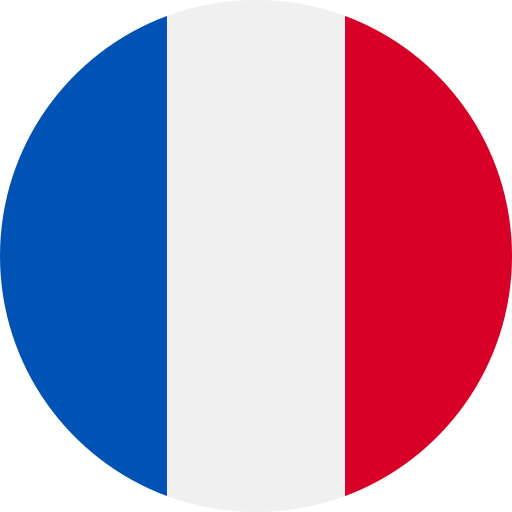Key Takeaways
- Distinct Dialects: Breton French and Parisian French are rooted in the same language but reflect different cultural influences, with Breton showcasing Celtic heritage and Parisian serving as the standardized form.
- Pronunciation Differences: Breton French features nasalized vowel sounds and softer consonants, whereas Parisian French emphasizes clear pronunciation and sharper articulation.
- Vocabulary Variations: Breton French includes unique regional terms influenced by local customs and the Breton language, while Parisian French relies on standardized vocabulary common in formal settings.
- Grammatical Structure: Sentence structures are simpler in Breton French, often omitting subjects for clarity, while Parisian French uses more complex grammatical constructions with subordinate clauses.
- Cultural Identity: Each dialect embodies its region’s identity—Breton reflects local pride and traditions, while Parisian represents a cosmopolitan blend of influences typical of France’s capital.
- Everyday Usage Contexts: Conversations in Brittany incorporate regional expressions related to local culture, contrasting with the formal tone prevalent in everyday interactions within Paris.
Ever wondered why Breton French sounds so different from Parisian French? If you’re diving into the world of French dialects, understanding these differences can be a game changer for your language journey. While both are rooted in the same beautiful language, they reflect distinct cultures and histories that shape how they’re spoken today.
Overview of Breton French and Parisian French
Breton French and Parisian French represent distinct dialects within the broader framework of the French language. While both share common roots, they reflect unique cultural influences shaped by their respective regions.
Breton French is primarily spoken in Brittany, a region with a rich Celtic heritage. This dialect incorporates elements from the Breton language, which adds a distinct flavor to its vocabulary and pronunciation. You might notice specific words or phrases that aren’t commonly used in other parts of France, showcasing Brittany’s unique identity.
On the other hand, Parisian French serves as the standard form of the language and is widely recognized across France and beyond. It’s often considered more formal and is typically what you’ll encounter in educational settings or media. The pronunciation tends to be clearer, making it easier for learners to grasp.
Understanding these differences enhances your appreciation for both dialects. If you’re curious about regional expressions or pronunciations, exploring these nuances can deepen your knowledge of French culture as a whole.
Pronunciation Differences
Breton French and Parisian French exhibit notable differences in pronunciation, shaped by their distinct cultural influences. These variations affect both vowel sounds and consonant articulation.
Vowel Sounds
Vowel sounds in Breton French often include nasalization, a feature less common in Parisian French. For instance, the sound “an” can take on a nasal quality that adds regional flavor to words. In contrast, Parisian French emphasizes clear vowel pronunciation without this nasal influence. This difference makes listening to each dialect an interesting experience—can you hear the unique characteristics when natives speak?
Consonant Variations
Consonants also differ between these two dialects. Breton French frequently employs softer consonant sounds compared to the sharper articulation found in Parisian French. For example, the “r” sound tends to be rolled or guttural in Breton, while it’s pronounced more distinctly in Parisian contexts. Such variations not only affect speech clarity but also contribute to the overall identity of each dialect.
Understanding these pronunciation differences enriches your comprehension of both Breton and Parisian dialects, enhancing your appreciation for France’s linguistic diversity.
Vocabulary Distinctions
Understanding the vocabulary distinctions between Breton French and Parisian French reveals a fascinating layer of linguistic diversity. Each dialect reflects its unique cultural influences, showcasing distinct terms and expressions.
Regional Terms and Expressions
Breton French features numerous regional terms not found in Parisian French. These words often draw from local customs or historical references specific to Brittany. For instance, “kouign-amann,” a famous pastry, is well-known in Breton culture but might confuse someone unfamiliar with the region. Additionally, you might encounter phrases like “c’est pas vrai!” commonly used in conversation to express disbelief or surprise—demonstrating the informal tone prevalent in Breton dialogues.
Influence from Breton Language
The influence of the Breton language on vocabulary is significant. Many words in Breton French originate directly from Celtic roots, enriching everyday speech with unique meanings and nuances. For example, “boc’h” (meaning “to talk”) showcases this influence clearly. In contrast, Parisian French relies more heavily on standardized vocabulary linked to formal education and media contexts. This divergence results in a vibrant tapestry of expressions that can vary widely even within regions of France.
By exploring these vocabulary distinctions further, you gain insights into each dialect’s character while appreciating France’s rich linguistic heritage.
Grammatical Variations
Grammatical variations between Breton French and Parisian French highlight unique structural elements that define each dialect. Understanding these differences enhances your grasp of the language and its regional nuances.
Sentence Structure
Sentence structure varies significantly between Breton French and Parisian French. Breton French often employs simpler, more direct sentence patterns, prioritizing clarity. For example, in conversational contexts, you might find shorter phrases or omitted subjects when they’re understood from context. In contrast, Parisian French frequently uses more complex constructions with subordinate clauses, which can convey subtler shades of meaning. This complexity makes it essential to adapt your speaking style depending on the audience.
Verb Conjugation Differences
Verb conjugation presents another notable distinction. In Breton French, certain verbs retain forms influenced by the Celtic roots of the region. These forms may appear less formal and more conversational than their counterparts in Parisian French, where standardized conjugations dominate. For instance, while both dialects use common verbs like “être” (to be) and “avoir” (to have), you might notice variations in how they’re used within sentences or informal speech patterns specific to Brittany.
Understanding these grammatical variations not only enriches your knowledge but also deepens appreciation for the cultural identities tied to each dialect within France’s diverse linguistic landscape.
Cultural Context and Usage
Understanding the cultural context and usage of Breton French and Parisian French reveals how language reflects identity and regional pride. Each dialect serves not just as a means of communication but also as an embodiment of local traditions, values, and histories.
Everyday Usage in Brittany vs. Paris
Everyday conversations in Brittany often showcase a blend of Breton French with elements from the Breton language. Locals use unique expressions rooted in their customs, making interactions vibrant and distinct. Phrases can vary significantly from those used in Paris, where the focus leans towards standardized forms for clarity across diverse audiences. In everyday settings like markets or cafés, you might hear terms specific to local cuisine or festivals that highlight Brittany’s rich culture.
In contrast, Parisian French dominates formal environments such as businesses and educational institutions. The vocabulary tends to align with broader media practices, ensuring consistency across various platforms. You’ll find that many Parisians prefer clear articulation over regional slang, aiming for professionalism in their speech.
Influence of Regional Identity
Regional identity plays a crucial role in shaping both dialects’ linguistic nuances. In Brittany, the influence of Celtic heritage contributes to a strong sense of belonging among speakers. This connection fosters pride in using regional expressions that reflect historical significance or cultural touchstones—like referencing local dishes during discussions about food.
On the other hand, Parisian French embodies the cosmopolitan nature of France’s capital city. It draws influences from numerous cultures due to its position as a global hub for art, fashion, and politics. The emphasis on clarity allows Parisians to communicate effectively with international audiences while maintaining their own unique flair through colloquialisms.
Recognizing these differences enhances your appreciation for France’s linguistic diversity while highlighting how language serves as more than mere words; it’s a living testament to each region’s history and identity.
Conclusion
Exploring the differences between Breton French and Parisian French offers valuable insights into France’s rich linguistic tapestry. Each dialect carries unique cultural significance shaped by historical influences and regional identities. You’ll find that these variations not only reflect local customs but also enhance your understanding of French culture as a whole.
Embracing both Breton and Parisian French allows you to appreciate the nuances of each dialect. Whether it’s the distinct pronunciation or the unique vocabulary, recognizing these differences deepens your connection to the language. As you navigate through these fascinating aspects, you’ll discover just how vibrant and diverse France’s linguistic heritage truly is.
Frequently Asked Questions
What are the main differences between Breton French and Parisian French?
Breton French incorporates elements from the Breton language, reflecting Brittany’s Celtic heritage, while Parisian French is the standardized form often used in education and media. Pronunciation, vocabulary, and grammar significantly differ between the two dialects.
How does pronunciation differ in Breton French compared to Parisian French?
Breton French features nasalized vowel sounds, like “an,” and softer consonants with a rolled “r.” In contrast, Parisian French emphasizes clear vowels and sharper consonant articulation, contributing to its formal sound.
What unique vocabulary can be found in Breton French?
Breton French includes many regional terms influenced by local customs and history. Words derived from Celtic roots enrich everyday speech, such as “kouign-amann,” a traditional pastry specific to Brittany.
Are there grammatical variations between Breton and Parisian French?
Yes, Breton French often uses simpler sentence structures for clarity compared to the more complex constructions of Parisian French. Additionally, some verb conjugations in Breton retain forms influenced by Celtic roots.
How do cultural contexts affect the usage of both dialects?
In Brittany, everyday conversations blend Breton language elements with Breton French expressions deeply rooted in local culture. Conversely, Parisian French is prevalent in formal settings due to its standardized nature and cosmopolitan influences.







